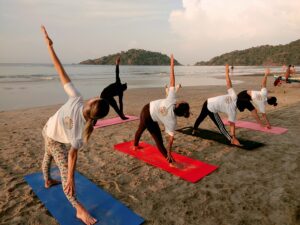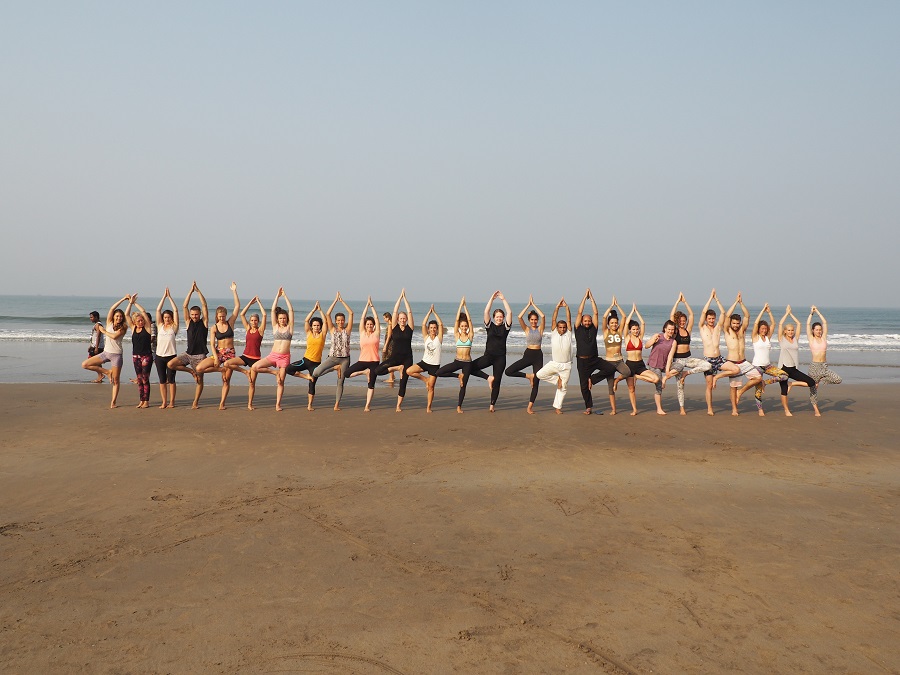How To Choose The Right Yoga Training Courses For Your Career?

Yoga is more than just a kind of physical activity. It is a disciplined science that aids in the balancing of the inner self and the external environment. At the Institute, a yoga instructor teaches various yoga asanas, kriyas, etc. They also serve as your life school, preparing you for life. Yoga is an excellent job choice since it is both an old art and a natural method to stay fit and healthy. A yoga instructor instructs on various yoga postures and breathing techniques and guides to achieving a hygienic environment. The reusable yoga towel is placed on top of your yoga mat to provide a relaxed and clean environment for your practice. You may practice Yoga with a soft reusable towel to help you stay focused and complete any tricky moves. It may also be used to clean towels after a vigorous yoga session. Looking beyond the typecast and doing something fresh and unexpected is always challenging. However, the job market, like the rest of the world, is rapidly changing. Africa, the European Union, and the Asia-Pacific region expect a surge in the sector. They also predict many work events for Yogis and Yoga students. So here they are, some tips on how to choose the best yoga training for your career.
1. Identify your Objective
This may seem to be self-evident. Thinking out why you are doing yoga teacher training is the first thing that will help you remain on track. It keeps your eyes on the prize in the long run. Consider becoming a yoga teacher or expanding your yoga knowledge are the most important things. It will make your search for the ideal yoga teacher training easier once you have established your goal.
2. Style of Yoga
There are many types of Yoga available nowadays, ranging from hot Yoga to Acro yoga. Not all yoga techniques are appropriate for you. Ashtanga, Power, and Vinyasa yoga are excellent alternatives for being physically active. Yin and Restorative Yoga may be a better fit for those who are not involved. Some other yoga forms focus more on the physical, such as Acro, and less on the energy, such as Kundalini. So, if you are just getting started with Yoga, try out a few new types to find what works best for you.
Furthermore, studying one style does not exclude you from teaching other types of Yoga. It only sets rock-solid foundations on which the rest of your education may grow. For every yoga style is its world, you might spend decades studying just one part of the practice. Your first training will offer you the building blocks for the rest of your life’s learning. It is a good idea to start with a popular form of Yoga. It would help if you had an open mind to search various kinds during your training.
3. Experience of the School
After you’ve decided the type of Yoga to practice, the next step is to figure out who you’ll be training with. When deciding on a course, keep in mind that a training organization is similar to your interest. Everything you learn must flow down from the top. It’s essential to choose a reputable institution with a long history of courses. Every year, dozens of new schools open their doors to provide training, and in the yoga business, the only need for enrolling in a training course is an E-RYT500. It is simply two years of teaching. Because teacher training is a big financial and time commitment, it’s in your best interest to see between established and new institutions.
A popular yoga school should have many alumni and give many genuine degrees to students who have recently finished. The more graduates a yoga school produces, the more feedback they get. The more they develop and update the curriculum and delivery method to fit the requirements of its students, the more familiar it becomes. It’s also good to check the finer points of the curriculum being given. Check that there is an equal mix of theoretical study and application of course material. A good training course should include material sessions, yoga classes where you may exercise as a student. The course should allow practice teaching sessions where you can apply what you’ve learned. You should teach your peers regularly. Don’t be confused to ask specific questions to the school. There is no such matter as a simple query. Any renowned training institution will happily walk you through the finer points of their courses. What next? How to find Yoga Jobs? Watch this Video to know about finding matching yoga jobs.
4. Experience of the Teachers
It goes without saying that while you’re learning to teach, your teachers will serve as important role models and sources of inspiration. The teaching staff at a training school should be its most valuable asset, and it’s a good idea to seek schools that use a co-teaching method since you’ll gain much from the varied perspectives offered by different professors. Examine the teaching staff for the training course you’re considering. What is the total number of years this teaching team has worked together? Is it possible to have guest lecturers for specific classes like anatomy and philosophy? Each instructor on your program should ideally be an internationally known specialist in their particular yogic discipline. They should collaborate to give you a well-rounded yoga education.
5. Budget
This is a significant issue. Yoga teacher training can cost anywhere from USD 1000 to USD 3000. It will also depend on the location and school. Remember, that figure includes only tuition and excludes the costs of lodging, transportation, and meals. In the past, I paid up to USD 5,000 for teacher training in New York City. The problem is, not all low-cost institutions are inferior to their more costly equivalents. Tuition is determined by various factors, including region, company structure, taxes, etc.
The bottom line is that selecting a school that suits your budget will benefit you financially in the long run. Yoga teachers who have recently graduated do not earn a lot of money. Many instructors struggle to obtain stable paid employment, and many resorts to living off their savings or taking on another part-time work to supplement their income. As a result, it’s not a good idea to take out a loan or borrow money from friends or relatives to pay for your tuition because it’s doubtful you’ll be able to repay the money anytime soon. The solution is looking for schools that offer scholarships, early-bird discounts, and payments by installment.
6. Duration
A 200-hour yoga teacher program usually lasts between 24-28 Days. However, I’ve seen a lot of yoga teacher training studios cram these hours into various formats. Some studios spread the instruction out across six months to a year, with students only coming on weekends. Other studios could cut the training time in half, but you’ll be in the studio for 08 to 13 hours straight. Neither of these software formats is preferable to the other. It would help if you chose a timetable that is convenient for you. The intensive 13-hour day program sounds like a match made in heaven for individuals who can only take two weeks off work. Spending 24 days 200 Hour yoga teacher training in Goa India, Nepal, Thailand or Bali does not appear to be a terrible option for those taking a year off to move around the earth.
CONCLUSION
Your first yoga teacher training trip will be an individual journey that is unique to you, and when it comes to selecting a course, you’ll end up following your instincts and going with your gut. Remember to take your time when choosing where and with whom you’ll complete your first yoga teacher training – and, more importantly, once your activity is planned, start getting excited. Congratulations, you’ve already taken the first step toward increased self-awareness, improved health, and a world of self-discovery by enrolling in yoga teacher training.



Hello. Please keep me updated about Yoga ttc in India. Hatha Yoga. Rishikesh Series. Rishikesh, Varkala, Goa, Trivandrum. Thank you in advance. Kind regards from Vienna. Karin
Really informative blog.
Thank you
Hi Team mantra,
Thank you for the insightful article on the how to choose the right yoga teacher training course.
I would just like to add a point here that sometimes the best yoga retreats might not be the most authentic and genuine yoga retreats, as the ones that are genuine don’t usually advertise or market themselves.
It would be prudent for aspiring and serious yoga students to check on the lineage of the Yoga School, the Course Material, and the level of sincere devotion of the yoga teachers towards the ancient science and art of yoga, before they embark on the sacred journey of self-revelation.
As an spiritual seeker and devoted yoga enthusiast, i wish the very best to all genuine students. May they find the right path to freedom and everlasting joy.